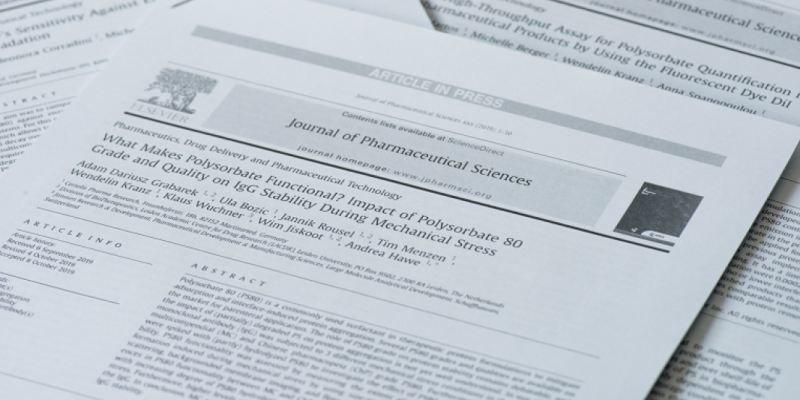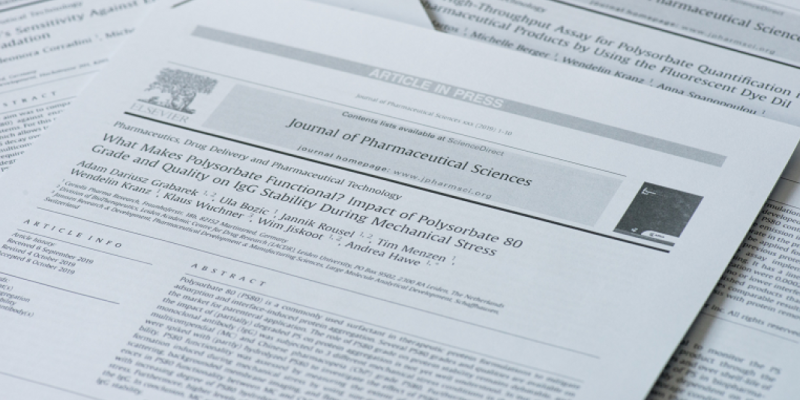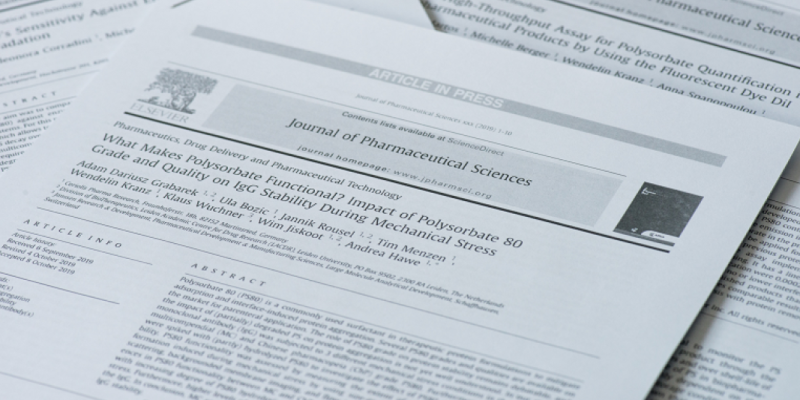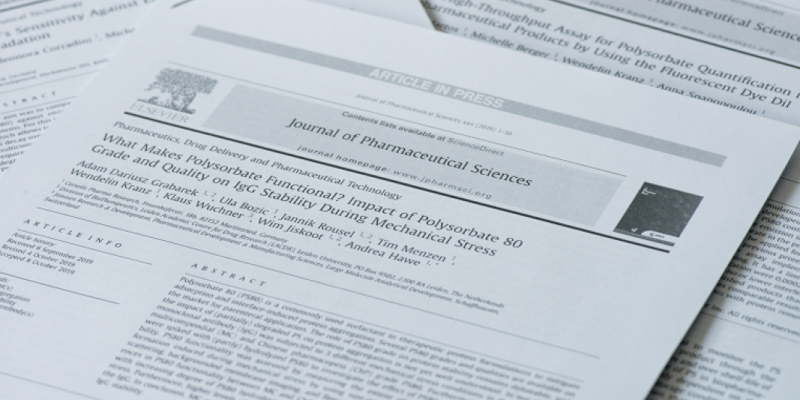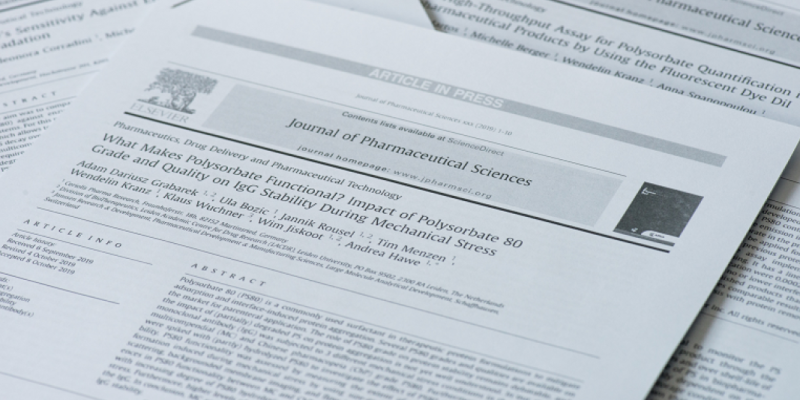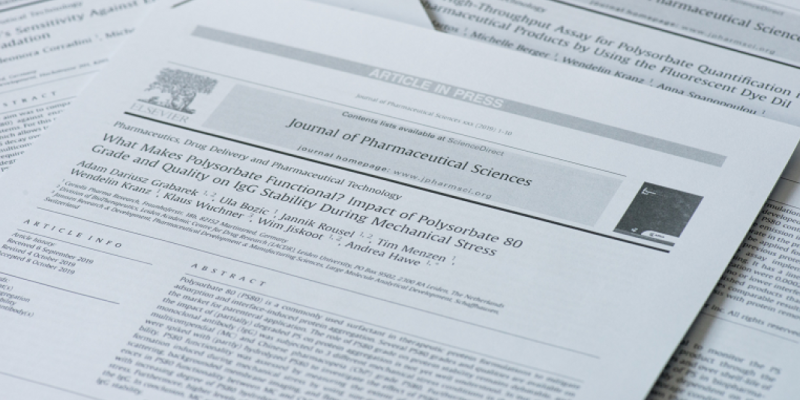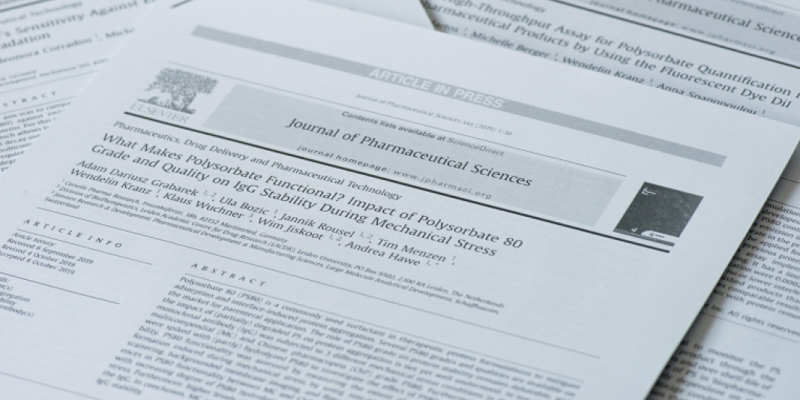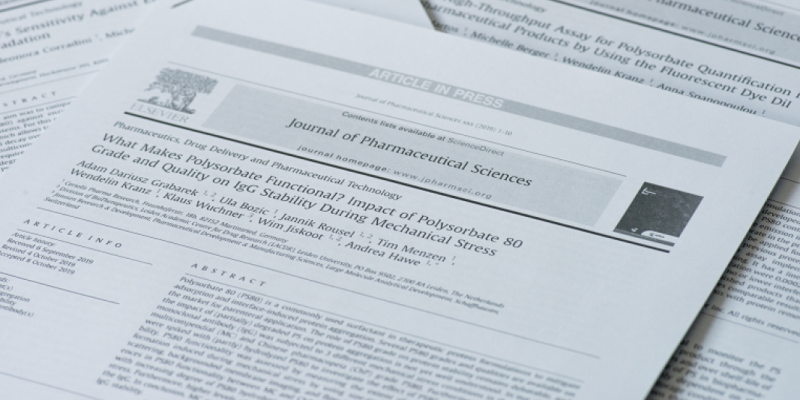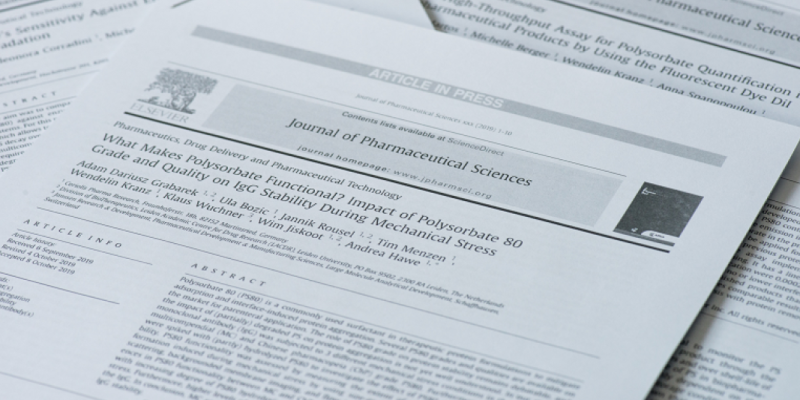A new strategy to stabilize oxytocin in aqueous solutions: I. The effects of divalent metal ions and citrate buffer.
AAPS J. 2011 Jun
In the current study, the effect of metal ions in combination with buffers (citrate, acetate, pH 4.5) on the stability of aqueous solutions of oxytocin was investigated. Both monovalent metal ions (Na(+) and K(+)) and divalent metal ions (Ca(2+), Mg(2+), and Zn(2+)) were tested all as chloride salts. The effect of combinations of buffers and metal ions on the stability of aqueous oxytocin solutions was determined by RP-HPLC and HP-SEC after 4 weeks of storage at either 4°C or 55°C. Addition of sodium or potassium ions to acetate- or citrate-buffered solutions did not increase stability, nor did the addition of divalent metal ions to acetate buffer. However, the stability of aqueous oxytocin in aqueous formulations was improved in the presence of 5 and 10 mM citrate buffer in combination with at least 2 mM CaCl(2), MgCl(2), or ZnCl(2) and depended on the divalent metal ion concentration. Isothermal titration calorimetric measurements were predictive for the stabilization effects observed during the stability study. Formulations in citrate buffer that had an improved stability displayed a strong interaction between oxytocin and Ca(2+), Mg(2+), or Zn(2+), while formulations in acetate buffer did not. In conclusion, our study shows that divalent metal ions in combination with citrate buffer strongly improved the stability of oxytocin in aqueous solutions.
AAPS J. 2011 Jun
https://link.springer.com/article/10.1208%2Fs12248-011-9268-7


